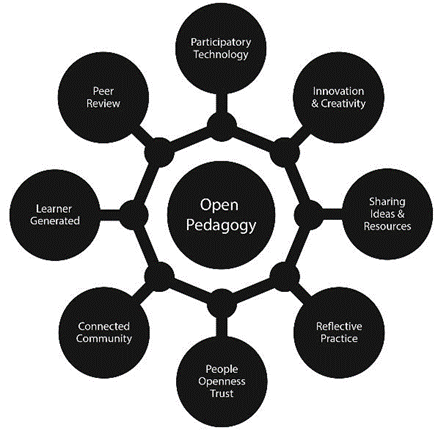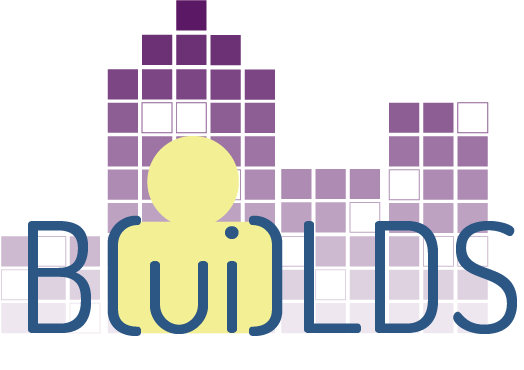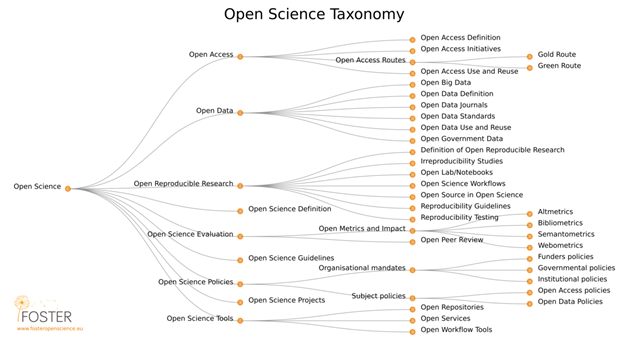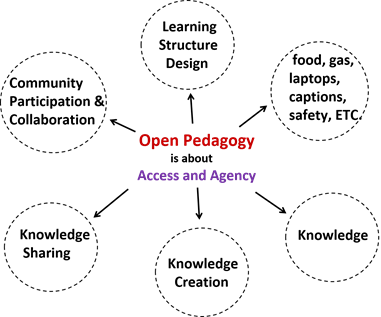Ontologies
The B(ui)LDS group developed the following tagging ontologies for the QUBES publishing platform. Terms in the tagging ontology are followed by definitions and related resources.
Inclusive Pedagogy for Life Sciences Education
Developing Self-awareness
Explore one’s own professional and social identity in order to best engage with how it intersects with your class design and student interactions.
Developing Empathy
Create opportunities to get to know and understand students. Give students a voice in creating their narrative.
Classroom Climate
Encourage respectful and supportive peer interactions, providing students’ opportunities to collaborate in building understanding, identify shared interests in course content, develop a supportive classroom network.
Fostering a Sense of Belonging
Use diverse scientist narratives, use inclusive language, use student names, helping students understand adversity as shared, transient experiences to increase social belonging.
Promoting Engagement and Self-Efficacy
Enhance students’ opportunities to contribute and benefit from the intellectual community of the classroom, use course structures to promote engagement in and out of class, enhance cooperation and reduce competition, emphasize the relevance of coursework to real life, support students’ sense of autonomy to increase interest and enjoyment and possibly decrease anxiety measures.
Leveraging Networks
Explicitly connect other aspects of campus life designed for student success to classroom content, such as living learning communities and curricular communities, invite staff and faculty from around campus into your classroom, connect first-year courses to other first-year curricular and co-curricular requirements.
Cite:
Dewsbury, B.M. (2019) Deep Teaching in a College STEM Classroom. Cultural Studies of Science Education, 1-23. https://doi.org/10.1007/s11422-018-9891-z
Dewsbury, B., & Brame, C. J. (2019). Inclusive Teaching. CBE—Life Sciences Education, 18(2), fe2. https://doi.org/10.1187/cbe.19-01-0021
Inclusive Teaching Checklist, CBE-LSE (2019) https://lse.ascb.org/wp-content/uploads/sites/10/2019/05/Instructor-Checklist%E2%80%94Inclusive-Teaching.pdf
Universal Design
Universal Design for Learning (UDL)
A framework to improve and optimize teaching and learning for all people based on scientific insights into how humans learn (CAST).
There are 3 aspects or tenets to this framework
- Engagement: Stimulate interest and motivation for learning
- Representation: Present information and content in different ways.
- Action and Expression: Differentiate the ways students can express what they know.
Universal Design
The design and composition of an environment so that it can be accessed, understood and used to the greatest extent possible by all people regardless of their age, size, ability or disability. An environment (or any building, product, or service in that environment) should be designed to meet the needs of all people who wish to use it (Center for Excellence in Universal Design).
NOTE: Drew sees utility in both of these and yet both feel deficient. The former reads more like a mission statement. What does it mean to “improve and optimize teaching and learning for all”? The three tenants help a little with this. The latter is a little more explicit “accessed, understood, used,”and lays out what aspects of a person should be rendered irrelevant to their access, understanding and use. However, it feels very physical and does not address learning other than as a “service” provided in an environment. A combination may be useful. Not sure.
Accessibility
The ability to access and benefit from some system or entity (https://en.wikipedia.org/wiki/Accessibility). In the UDL context, this term generally refers to access for people with disabilities, particularly compatibility with assistive technologies. It is also used more broadly in the sense that a goal of UDL is to make learning accessible to the widest range of people possible. Not to be confused with usability.
NOTE: The distinction between UDL and Accessibility is hard to make when thinking beyond assistive tech (which people should). My own feeling is that one can work on accessibility while not truly taking a UDL approach, but good UDL requires accessibility. However, this could be argued depending on conception of Accessibility. Also, this entire conception of the term makes much less sense when thinking about accessibility in the context of open science and OER, where the question is more focused on, “Can I get my hands on it?”
Usability
The ease of use and learnability of a human-made thing, usually software or website. It usually refers to a specific target user group and a specific use context. In learning , a more “usable” tool imposes less cognitive load on students, allowing them to focus on content, not the tool itself. The term is primarily presented here to differentiate it from accessibility
NOTE: This usability versus accessibility issue is also muddy. For instance, you could have two accessible things and yet one is more usable than the other, depending on who the user actually is. However, interpret accessibility broadly enough and you can argue that it is impossible to be accessible if usability is low.
Assistive Technology (AT)
Any item, piece of equipment, software program, or product system that is used to increase, maintain, or improve the functional capabilities of persons with disabilities (Assistive Technology Industry Association). This can be low tech (e.g. puff-painted lines on paper) or high tech (screen reading or language processing software). AT can also be inclusive or specialized learning materials and curriculum aids.
Assistive Technology Compatible
Any materials tested to be compatible with one or more assistive technologies.
Open Science and Education Practices Ontology
Open Educational Practices
- can be defined as the set of practices that accompany either the use of OERs or the adoption of open pedagogy (Open Pedagogy)
- constitute the range of practices around the creation, use, and management of open educational resources with the intent to improve quality and innovate education (Hegarty 2015, Educational Technology)
Open Access
The free, immediate, online availability of research articles combined with the rights to use these articles fully in the digital environment. (SPARC)
Open Education
Encompasses resources, tools and practices that are free of legal, financial and technical barriers and can be fully used, shared and adapted in the digital environment. (SPARC)
Open Educational Resources (OER)
Teaching, learning, and research resources that are free of cost and access barriers and which also carry legal permission for open use. (SPARC)
Defining the "Open" in Open Content and Open Educational Resources
The terms "open content" and "open educational resources" describe any copyrightable work that is either (1) in the public domain or (2) licensed in a manner that provides users with free and perpetual permission to engage in the 5R activities: (SPARC)
- Retain - the right to make, own, and control copies of the content (e.g., download, duplicate, store, and manage)
- Reuse - the right to use the content in a wide range of ways (e.g., in a class, in a study group, on a website, in a video)
- Revise - the right to adapt, adjust, modify, or alter the content itself (e.g., translate the content into another language)
- Remix - the right to combine the original or revised content with other material to create something new (e.g., incorporate the content into a mashup)
- Redistribute - the right to share copies of the original content, your revisions, or your remixes with others (e.g., give a copy of the content to a friend)
Open source
A term denoting that a product includes permission to use its source code, design documents, or content. It most commonly refers to the open-source model, in which open-source software or other products are released under an open-source license.
Open Data
is research data that: (SPARC)
- Is freely available on the internet;
- Permits any user to download, copy, analyze, re-process, pass to software or use for any other purpose; and
- Is without financial, legal, or technical barriers other than those inseparable from gaining access to the internet itself.
Another definition by Javiera Atenas and Leo Havemann:
“Open Data is an umbrella term describing openly-licensed, interoperable, and reusable datasets which have been created and made available to the public...”
Creative Commons licenses
Retain copyright while allowing others to copy, distribute, and make some uses of their work. Every Creative Commons license also ensures licensors get the credit for their work they deserve.
Open science
The movement to make scientific research (including publications, data, physical samples, and software) and its dissemination accessible to all levels of an inquiring society, amateur or professional. Open science is transparent and accessible knowledge that is shared and developed through collaborative networks.
Open Science
by Dan Gezelter:
- Transparency in experimental methodology, observation, and collection of data
- Public availability and reusability of scientific data
- Public accessibility and transparency of scientific communication
- Using web-based tools to facilitate scientific collaboration
Open Science Taxonomy
Open Science
- Open Access
- Open Access Definition
- Open Access Initiatives
- Open Access Routes
- Open Access Use and Reuse
- Open Data
- Open Big Data
- Open Data Definition
- Open Data Journals
- Open Data Standards
- Open Data Use and Reuse
- Open Government Data
- Open Reproducible Research
- Definition of Open Reproducible Research
- Irreproducibility Studies
- Open Lab/Notebooks
- Open Science Workflows
- Open Source in Open Science
- Reproducibility Guidelines
- Reproducibility Testing
- Open Science Definition
Open Science Continued
- Open Metrics and Impact
- Altmetrics
- Bibliometrics
- Semantometrics
- Webometrics
- Open Peer Review
- Open Science Evaluation
- Open Science Guidelines
- Open Science Policies
- Organisational mandates
- Funders policies
- Governmental policies
- Institutional policies
- Subject policies
- Open Access policies
- Open Data Policies
- Organisational mandates
- Open Science Projects
- Open Science Tools
- Open Repositories
- Open Services
- Open Workflow Tools
Open Pedagogy
An access-oriented commitment to learner-driven education. It is also a process of designing architectures and using tools for learning that enable students to shape the public knowledge commons of which they are a part.
Open pedagogy in practice can include creating, adapting, or updating OER with students, building course policies, outcomes, assignments, rubrics, and schedules of work collaboratively with students, or facilitating student-created and student-controlled learning environments such as Domain of One’s Own or students writing/editing Wikipedia articles.
(This is a short description of open pedagogy by Rajiv Jhangiani at Kwantlen Polytechnic University, modified slightly by Karen Cangialosi)

Figure 1. Eight attributes of Open Pedagogy, by Bronwyn Hegarty, based on Conole (2013)
Sources:
SPARC - https://sparcopen.org/ (primary source)
Open Pedagogy - http://openpedagogy.org/
Wikipedia - “open source,” “open science”
Creative Commons - https://creativecommons.org/


